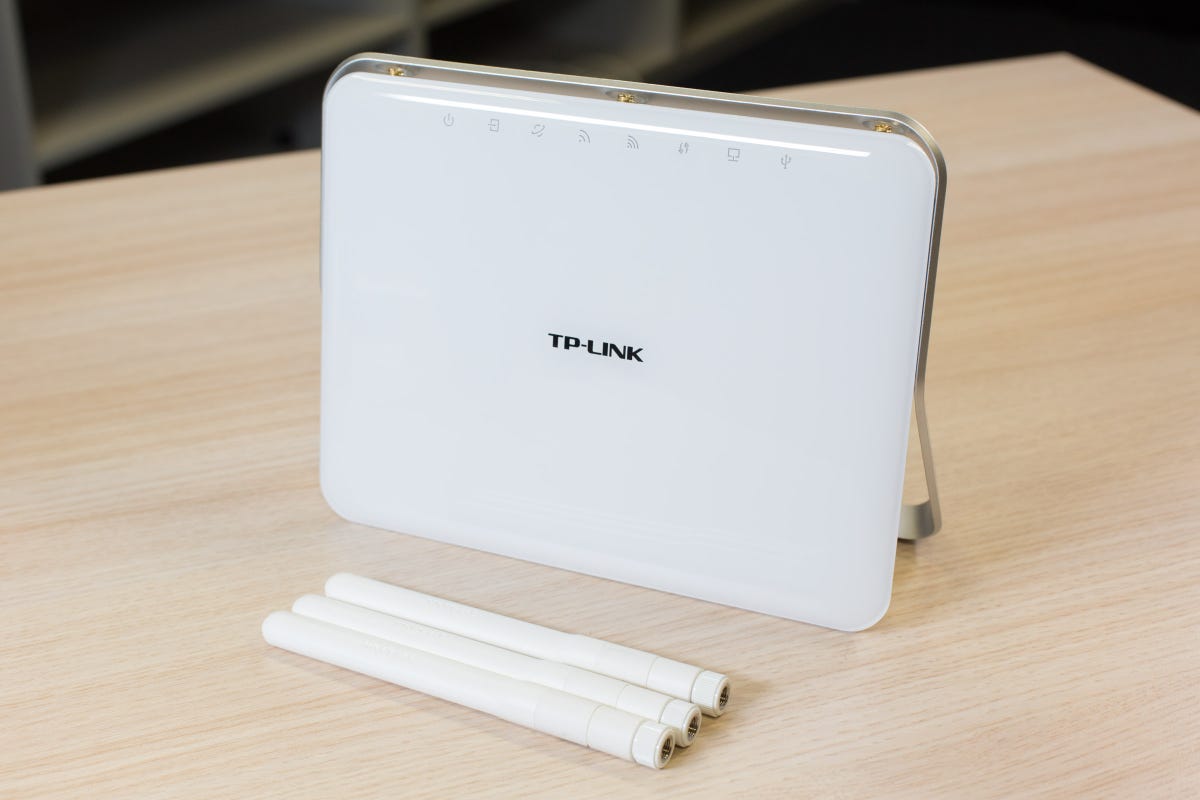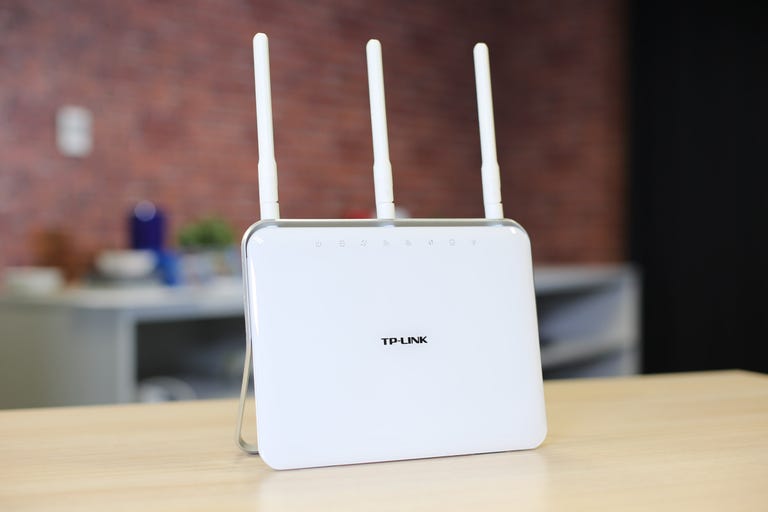 Why You Can Trust CNET
Why You Can Trust CNET TP-Link Archer D9 AC1900 review: A top of the line modem-router for an affordable price
If you want premium network performance but don't want to sacrifice your wallet, TP-Link is a strong contender.
On some levels TP-Link is a bit like Billion -- which is no bad thing. Affordable devices, great performance and a web UI that's built for tech enthusiasts rather than the general public.
The Good
The Bad
The Bottom Line
Take its top-of-the-range 802.11ac modem/router, the AC1900 rated D9. Attractively designed, good performer, yet comes in at AU$259 in Australia and £159 in the UK, a good deal cheaper than its competitors. So are there any shortcuts taken?
Design and ease of use
Certainly not in industrial design -- the D9 comes in an attractive white and silver with three detachable antennas. You won't be able to wall mount the D9, it's meant for desk duty only. A series of status lights line the top, showing power, line sync, Internet connectivity, 2.4GHz, 5GHz, WPS and USB activity. There is a lonely, single light for LAN activity, which isn't great for diagnosing problems given there's four gigabit Ethernet ports on the rear.

TP-Link includes a mini CD in the package, containing manual, printer software, and an "Easy Setup Assistant". This is more for those who aren't familiar with their router's web UI, and walks the user through ADSL and Wi-Fi settings. Those who go straight to the router's web UI will also find a quick setup tool, with more options therein.
Tech enthusiasts will love TP-Link's web interface -- it's spartan and straightforward. Newbies may find it a bit overwhelming, especially as it pulls no punches on technical language -- but this aside, it's all laid out in a fashion that makes sense and is easy to find what information and settings you need.
Features
The D9 has the standard four gigabit Ethernet ports, a USB 3.0 port on the rear and a USB 2.0 port on the side. It has physical buttons for both power and Wi-Fi on/off.
Despite the huge menu on the left, the D9's options are fairly standard for a router of this class, the major standout feature being VLAN support (listed as "interface grouping"). Otherwise the expected firewall, single 2.4GHz guest network support, port forwarding, wireless and DSL settings are here. DynamicDNS support is included, but only includes DynDNS.org and No-IP as service providers.
Parental control is restricted to a time-scheduled, MAC-assigned URL whitelist -- add no URLs, and the associated client will effectively be cut off from the Internet. Unlike the lower tier Archer D7, the D9 doesn't tell you this in the interface, leaving you to find out for yourself.
USB support allows storage access via FTP and SMB, DLNA streaming and a print server. For printer support you'll need to install TP-Link's USB printer controller app. While it suggested I hook up my laptop to the router by Ethernet during set up, wireless worked just fine.
Just like the Asus DSL-AC68U, the D9 brought up my HP Photosmart as "CQ176A" -- unlike Asus though, TP-Link's software is a little more confusing to use. It does come with an extra benefit though: the ability to use your scanner over Wi-Fi if you have a multifunction printer.
QoS is available through what TP-Link calls "bandwidth control" -- you set your Internet connection speed, then can apportion a part of that to IP-ranges and ports.
Inside the box you'll also find a line filter, phone cable, Ethernet cable, and manual.
Performance
Tests were done with firmware 0.9.1 0.1 v0041.0 Build 140905 Rel.30877n, and I used iPerf to determine the maximum wireless speed at three locations: the next room, immediately upstairs with some furniture in the way, and one room away from immediately upstairs.
The wireless client used was an Asus G550 laptop with a 2x2 Intel AC7260 wireless card, as an indicator of average performance. Each WLAN is set to WPA2 personal encryption and a clear channel is chosen. Where possible the highest channel bandwidth is chosen, either 40 or 80MHz depending on the wireless standard. Where appropriate, transmission standard is set to 802.11n or 802.11AC only.
Due to the variable nature of wireless and surrounding WLANs, each unit was tested multiple times at various times of day to achieve a best case scenario performance value. Your own environment will see different results.
802.11n 2.4GHz performance
- Location 1
- Location 2
- Location 3
TP-Link takes our fastest spot for close 2.4GHz performance, although the difference is within margin of error.
802.11n 5GHz performance
- Location 1
- Location 2
- Location 3
While the Archer D9 is a consistently good performer, there's an anomaly: it scores the lowest in our 802.11n 5GHz location 3 test.
802.11ac performance
- Location 1
- Location 2
- Location 3
802.11ac performance tends to be pretty consistent across brands, with the Archer D9 pulling the numbers it should.
Storage was tested over gigabit LAN with a SanDisk Extreme NTFS formatted 64GB USB 3.0 drive plugged into the fastest USB slot, transferring a 100MB file via SMB.
USB storage performance
- Read
- Write
While its read speeds are commendable compared to other modem/routers, the D9 suffers on write speeds.
Conclusions
TP-Link's Archer D9 is a solid, no frills offering, especially for the price. There is competition though: Australians will find the D-Link DSL-2890AL offers better value for money and superior wireless performance, although USB performance suffers.
Otherwise there's TP-Link's own Archer D7, which has slower 2.4GHz performance and no USB 3.0, but is significantly cheaper and otherwise has all the same features.



